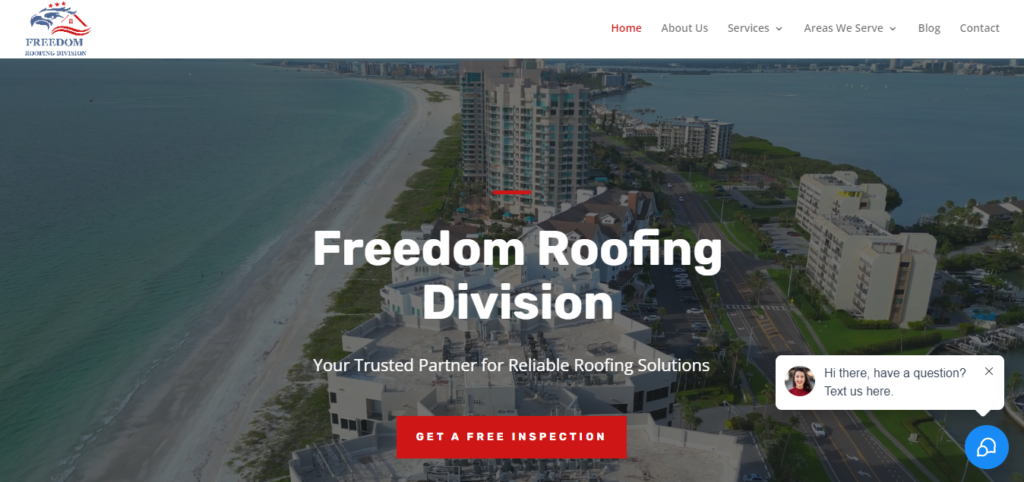Testing blg

Have you ever caught yourself asking, “Why isn’t my website ranking higher on Google?” Or perhaps you’re wondering if all the SEO strategies you’ve been investing in are worth the effort anymore…
Is SEO Dead in 2025?

Have you ever caught yourself asking, “Why isn’t my website ranking higher on Google?” Or perhaps you’re wondering if all the SEO strategies you’ve been investing in are worth the effort anymore. Well, you’re not alone. In 2025, the digital landscape is buzzing with a new acronym: AEO. Yes, Answer Engine Optimization. And it’s making us question, “Is SEO dead?” Let’s dive into this debate, shall we? Table of Contents The Rise and Reign of SEOWhat Is AEO, and Why Is Everyone Talking About It?SEO vs. AEO: The Clash of TitansSEO vs. AEO Trends (2020-2025)Breakdown of SEO Ranking Factors ImportanceThe Growth of Voice SearchThe Evolution of Search IntentPractical Steps to Master AEO OptimizationA Brand’s Journey from SEO to AEODebunking the “SEO Is Dead” MythFinal Thoughts: The Future of SEO and AEOFAQs The Rise and Reign of SEO Once upon a time, SEO was the king of digital marketing. Keywords, backlinks, and meta descriptions ruled the internet kingdom. If you nailed these elements, you could virtually guarantee a spot on the first page of search results. But here’s the thing—the internet has evolved, and so have search engines. Today, Google isn’t just a “search engine”; it’s an “answer engine.” Think about it. How often do you Google something expecting a direct answer? Whether you’re asking about the best pizza place near you or how to bake a cookie, you want results… instantly. That’s where AEO comes into play. What Is AEO, and Why Is Everyone Talking About It? AEO, or Answer Engine Optimization, is all about making your content the ultimate go-to for specific answers. It’s no longer just about sprinkling keywords—it’s about understanding why people are searching and delivering exactly what they need. Here’s what makes AEO so important: Pro Tip: Add FAQs to your website or blog posts. Questions like “What is AEO?” or “Why is AEO important for my business?” make your content scannable and directly align with user search intent. By focusing on AEO, you’re not just optimizing for search engines—you’re optimizing for people. That’s why it’s the future of online visibility! SEO vs. AEO: The Clash of Titans Now, let’s pit these two giants against each other. Is it SEO vs. AEO, or can they coexist? SEO: The Veteran AEO: The Challenger Here’s the kicker: it’s not an either/or situation. SEO isn’t dead; it’s evolving. By integrating AEO into your strategy, you can hit two birds with one stone: attract traffic and provide answers. SEO vs. AEO Trends (2020-2025) To visualize this shift, we’ve created a chart showing the popularity trends of SEO and AEO over the years: This chart clearly illustrates the gradual decline in SEO’s dominance, with its popularity dropping from 80% in 2020 to 55% in 2025. Conversely, AEO has risen steadily from 20% to 45% over the same period. This trend highlights how the industry is shifting towards a more intent-driven approach, making AEO an essential part of digital strategies. Breakdown of SEO Ranking Factors Importance Another aspect of understanding SEO’s evolution is recognizing which ranking factors matter most. Here’s a breakdown: Content quality dominates the ranking factors in 2025, accounting for 30% of SEO importance. Backlinks remain vital at 25%, followed by page speed (15%), mobile optimization (20%), and structured data (10%). These insights reinforce the need for a holistic approach to SEO, where content and technical optimization go hand in hand. The Growth of Voice Search Voice search is another game-changer. With devices like Alexa and Google Assistant becoming household staples, voice search has witnessed exponential growth: From 2020 to 2025, voice search usage has increased from 25% to a staggering 75%. This rise underscores the importance of optimizing content for conversational queries and long-tail keywords to capture voice search traffic effectively. The Evolution of Search Intent Search engines are no longer satisfied with showing a list of results. They want to provide answers directly on the search results page. Features like Google’s featured snippets, knowledge panels, and “People Also Ask” sections are prime examples of this shift. Users expect convenience, and AEO delivers it. For instance, if someone searches for “best laptop for students,” they don’t just want a list of laptops. They want to know why a particular laptop is best, what features it has, and even where to buy it. AEO helps your content meet these expectations. Practical Steps to Master AEO Optimization Feeling a little overwhelmed? Don’t worry; you’re not the only one trying to navigate this shift. Here’s a detailed roadmap to help you master AEO and stay ahead: 1. Understand Your Audience 2. Embrace Structured Data 3. Create Answer-Driven Content 4. Optimize for Voice Search 5. Leverage Visual Content 6. Monitor and Adapt By following these steps, you’ll not only boost your rankings but also provide value to your audience in a way that keeps them coming back. A Brand’s Journey from SEO to AEO Let us tell you about a brand that nailed this transition. Imagine a small e-commerce website selling eco-friendly products. Initially, they focused purely on SEO: keyword-rich blogs, backlinks, and on-page optimization. While they attracted traffic, conversions remained low. Then came the AEO pivot. They added structured data, revamped their FAQ section, and optimized for voice search. Suddenly, their featured snippets skyrocketed, and they became a go-to source for queries like “How to reduce plastic waste?” Not only did traffic improve, but sales doubled. Coincidence? We think not. More Success Stories Consider an online fitness training company. Initially, they relied heavily on SEO by targeting generic keywords like “best fitness trainer.” While this approach brought traffic, it failed to convert effectively. Once they adopted AEO principles, they focused on creating question-based content like “What is the best workout for beginners?” and optimized for voice search. Within months, they appeared in multiple featured snippets, boosting both credibility and client sign-ups. Another example is a local bakery. By optimizing for “near me” searches and creating structured data for voice search results, they saw a 40% increase in walk-in customers. Now think
Margaret Andersen

Margaret Andersen 7.3.2024 4 min read Remember home shopping on cable TV? Well, it has a new, digital-first face, and it’s called live stream shopping. Drawing comparisons to the infomercials and home-shopping networks of the past, viewers can interact with sellers in real-time; only this isn’t QVC circa 1990. Live stream shopping platforms are marketed toward Gen Z and younger consumers, delivering a fusion of entertainment, eCommerce and real-time interaction right to your phone. Live stream shopping goes by several different names—live shopping, live commerce, video-driven commerce, vCommerce, experiential shopping platforms—but one thing that’s constant is its rate of growth. The rise of live stream shopping In China, the live stream shopping market is projected to reach $647 billion this year, and it’s rapidly gaining popularity in the US. Accelerated by the pandemic, live stream shopping offered a lifeline to brick-and-mortar businesses that had to remain shuttered during the early lockdown days. Since 2021, the US live-shopping market has almost tripled in size. And while experts have called live-commerce platforms the malls of the future, where people will go to shop and socialize, the industry is still in its infancy. The brands entering the chat QVC’s parent company Qurate Retail Group, one of the largest players in video-driven commerce, recently launched Sune, a Gen Z-focused live stream shopping app. Each user’s in-app experience is customized to their preferences and purchase history, with personalized recommendations and filters. Consumers can purchase products directly within their feeds and tune into their favorite influencers and content creators to explore cult beauty and fashion brands, handmade products and exclusive limited-edition items. Brian Beitler, founder of Sune, says that the app’s playful branding and UI set it apart from other live-shopping platforms, and Sune’s goal is to provide a joyful, inspirational and relaxing experience. Popshoplive is a platform similar to Sune that’s also geared toward younger consumers, powered by CommandSold. It markets itself as the first all-in-one-creator commerce platform, giving users a suite of tools to start selling even if they don’t make their own products. Then, of course, there’s TikTok Shop. Despite a bumpy start and counterfeit problem, it’s now tied with Instagram for Gen Z’s preferred shopping app. What agencies can learn from the popularity of these platforms It’s hard to know what the future holds for this burgeoning format, but more and more brands are betting on its success, with big box retailers like Amazon, Nordstrom and Best Buy all integrating live-shopping experiences into their websites. These hyper-engaging, commerce-driven brands present a few takeaways for web designers and Wix Studio eCommerce sellers of all kinds, such as: Design to reflect a brand’s values “We wanted our branding and UI to highlight some of our core values,” Beitler says. “Sune yellow conveys the joy of shopping and discovery, an emotional experience we wanted to bring back through our platform.” They also conveyed movement and fluidity. “Our content should always be moving and evolving with our users and creators,” he says. “Our shapes aren’t always perfect circles, our logo isn’t one straight line and our font has curvature to it.” Related: Fashion’s online innovators will inspire you to push your digital designs into the future Sune runs live experiences daily, but most of its content is pre-recorded video, so it’s not just about live streaming. “Pre-recorded videos in each user’s feed are designed similarly to social media platforms where you can like, comment or share, creating a feeling of community,” Beitler says. “And the video component allows users to engage with the hosts live and get real-time demonstrations and answers to enhance and personalize their experience.” Use microinteractions to keep users engaged On Popshoplive, I joined a seller’s stream and was greeted personally by the host as current viewers commented in the chat about their favorite products or just how their day was going. Streams can last for several hours and are filled with a variety of microinteractions and engaging UI elements, like lightning bolt icons showering the host’s interface like confetti whenever a sale is made. You can use website animations to engage visitors on your clients’ websites, too. Check out 10 website animations that convert and engage for ideas and inspo. Connect with your audience “Live streaming empowers the people who are caring, empathetic and can read the room,” says Dan Dan Li, founder of Popshoplive. “The ones who will benefit the most from live selling in the next few years are the people who care deeply and strive to create that emotional connection with the audience. It’s a different type of creator—not necessarily the funniest or prettiest person you know, but the one you want to spend the most time with.” In other words, the majority of growth in this market can be attributed to small businesses, individual makers and influencers who know how to connect with their audience in an authentic way. And that’s important on any platform you tap into today. For more about connecting with your audience, check out the influencer trends you need to know now and what to make of a possible TikTok ban. Sign up now to create your next site on Wix Studio.TrendingeCommerce RELATED ARTICLES TrendingUX The 20 best professional fonts to consider for your next website IDO LECHNER
